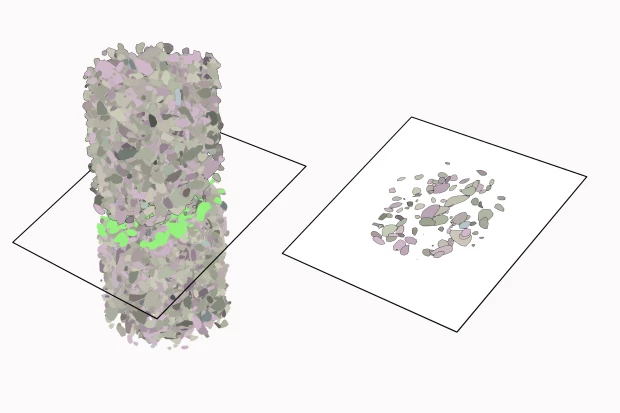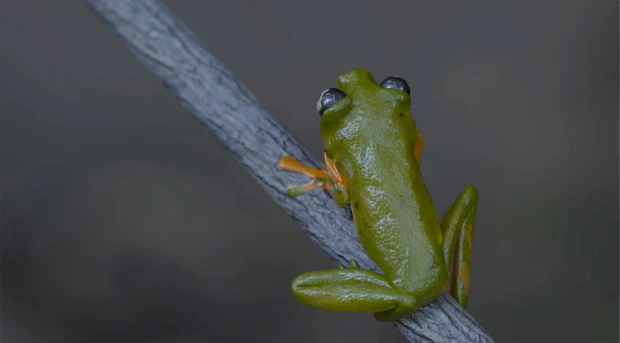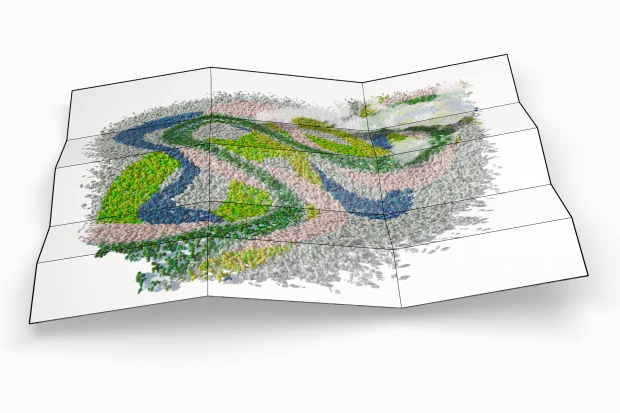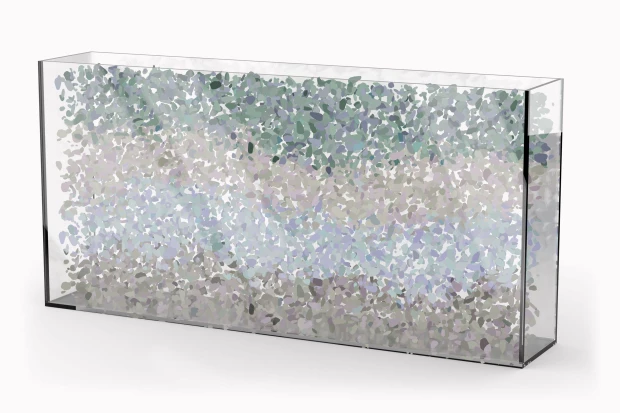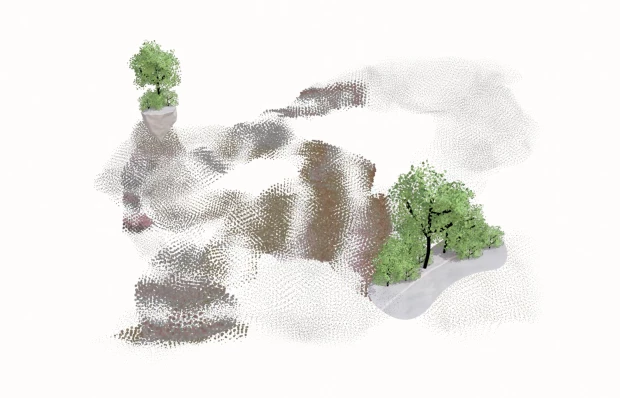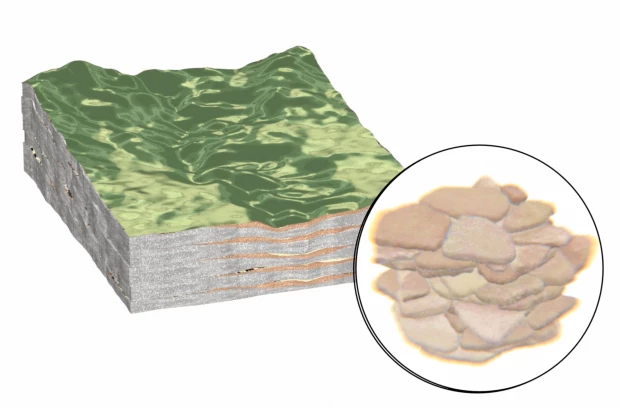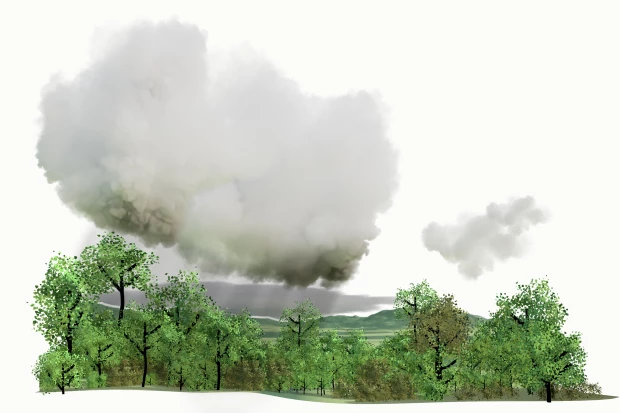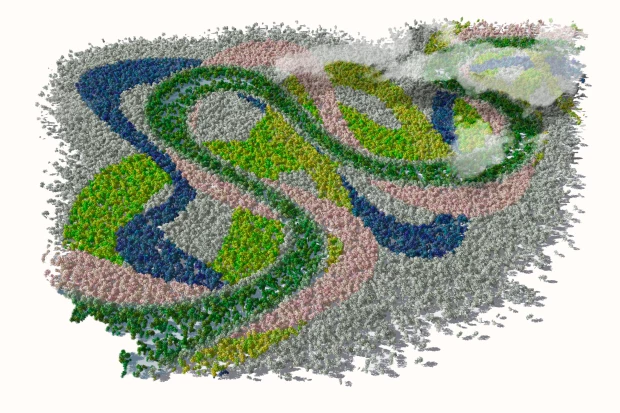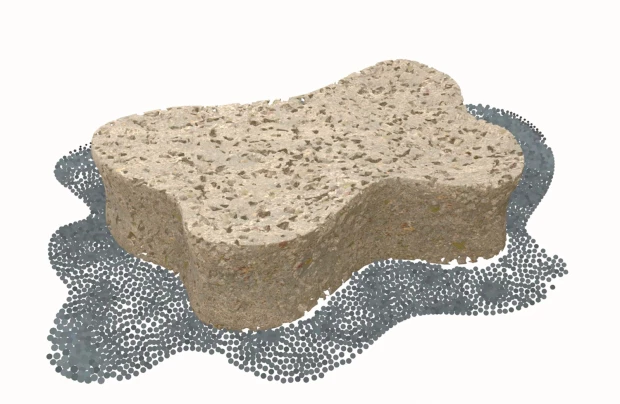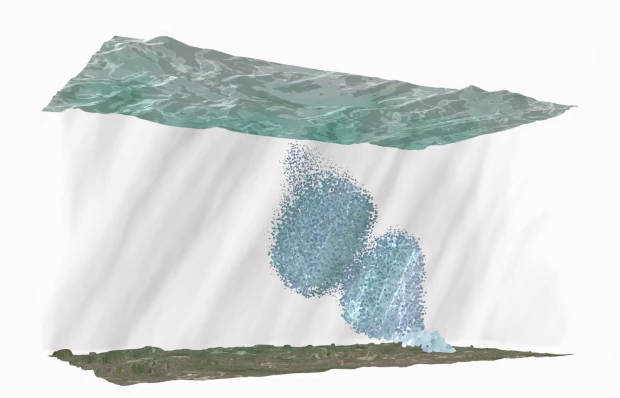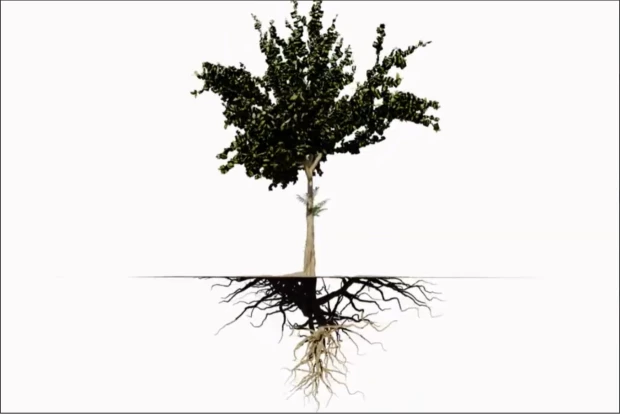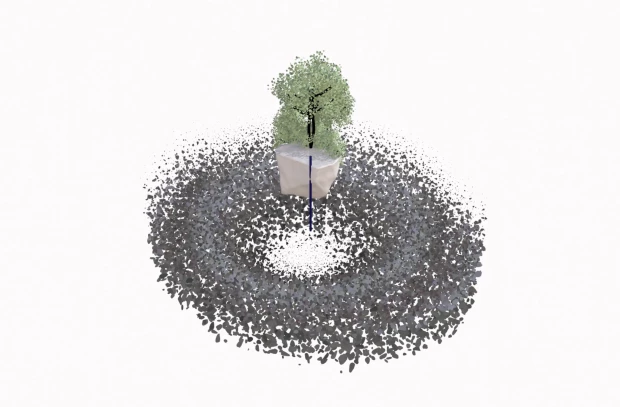We would have missed the spring if someone hadn’t led us there. In fact on our first attempt to find the spring we didn’t see it, and climbed higher up the hill, which allows you to look out over the hills just outside of the town of Río Blanco. Springs in Río Blanco were typically described as hard to reach, high up in the mountain, and far away from where the people live. But this spring was just behind someone’s house. Looking down on its surface, the spring seemed like a stagnant pool of water, far from the gushing crystal clear springs we see in photos and videos that circulate in the public domain. Speaking to people who live in Río Blanco, springs were also sometimes not described as single points in which water emerges from the ground, sometimes the spring encompasses a whole territory, the spring itself is the mountain, the mountain that is responsible for the recharge of the aquifer below. The spring helps us think of the aquifer as a whole territorial complex, dispersed throughout different geological formations, rather than a simple container of water sitting below the surface ready for human consumption.
Indeed there are many different kinds of springs. A spring is defined as a location where water from underground aquifers discharges onto the land surface, often resulting in visible flows that can vary from intermittent trickles to continuous streams. Springs can be classified into various types based on their discharge characteristics, geological contexts, and thermal properties. Gravity springs, for instance, emerge under unconfined conditions where the water table meets the surface, while artesian springs discharge under pressure from confined aquifers.
The emergence of springs is deeply influenced by geological and geomorphological factors, including rock types and structural features like faults, which can facilitate or obstruct groundwater flow. These elements not only define the physical characteristics of springs but also shape their roles within the hydra-geo-social landscape.
Springs are featured in mythology, as sources of life associated with godly beings. As such, springs are places where deities dwell, and life is considered to begin. Springs are thought to have a relation with purity, with a nature untouched by humans. This has led to phenomena such as “spring hunters”, in which people go on searches just to find these points of mediation between the surface and subsurface. Such beliefs have also situated springs - and the finding of springs - in back-to-the-land and libertarian ideologies in the United States that prioritize self-reliant modes of being. In this way of thinking, harnessing the spring is a way of channeling nature to become independent from governmental infrastructures.
In Costa Rica, finding a spring on your property can have the opposite effect, tying one to governmental infrastructures and state law. A spring whose water flows continuously throughout the year reconstitutes a property, redefining how someone can interact with the land. A spring used for water consumption requires by law a 200 meter radius of protection, a spring that is not used for consumption needs a radius of 100 meters. A 200 meter radius totals 12.57 hectares of land that must be conserved, while a 100 meter radius totals 3.14 hectares of land. From Costa Rica’s last agricultural census (Censo Nacional Agropecuario, 2014), an average family plot of land is estimated at 12.27 hectares of land, a size which is under the threshold of protected land that one must conserve if a spring is used for consumption (Reference). Of the 93,017 agricultural plots included in the census, 59,810 of these plots are under 10 hectares. The majority of farms in the country are in fact below the threshold of the protected radius for a spring that provides water for human consumption.
The Water Law (La Ley de Aguas), which dates back to 1942, has faced backlash from different corporate and political actors throughout the decades, especially as it is seen to hinder the State’s developmental plans (Reference link). While this protected area is important for conserving water for human consumption, for landowners who want to apply to redevelop their land for residential purposes, agricultural or extractive activities, the law is seen as an obstruction (See for example: Reference; Reference). At the same time, there are arguments that the law also fails to meet the current situation of climate change, in which water scarcity is increasing as a concern in the country (Reference link). In the way, the Water Law places the figure of the spring in a debate about the country’s future in a world of climatic collapse. In a time in which protecting the area around a spring is becoming more crucial, the pressures of agroindustrial, extensive livestock and urban development are also generating increasing risks for the health of water and ecosystems. This is especially evident in issues of contamination of herbicides and pesticides in agroindustrial activities (reference, reference).
“El tener una naciente, un río o un lago dentro de una propiedad, no tiene ninguna connotación negativa. Por lo contrario: ¡usted tiene acceso a un recurso natural! La realidad de los procesos para tener concesión sobre este recurso puede ser (como muchos procesos aquí) algo extendida, esto no le quita valor a la fuente que puede ser una naciente en su propiedad. Ya sea que usted desee utilizarla para consumo propio, irrigación de cultivos, o empaque y venta, la fuente de agua siempre es una fuente de vida.”
Translation:"Having a spring, a river, or a lake on your property has no negative connotation. On the contrary: you have access to a natural resource! The reality of the processes for obtaining permission for this resource can be (like many processes here) somewhat lengthy; however, this does not diminish the value of the spring that may be on your property. Whether you wish to use it for personal consumption, crop irrigation, or packaging and sale, the water source is always a source of life."
The quote above is from a real estate agency’s website, which attempts to paint finding a spring in your property in a positive light. The real estate agents seek to situate the spring within the economic value of the property, citing its potential use in agriculture or being sold as a commodity. The Water Law is seen as a threat as it removes the spring, and the water that it delivers to the surface, as a potential economic resource, as a site of extraction. Water, stripped of its economic utility, is a threat to the very idea of property, as it can no longer be situated within the property value -thereby detracting from the value itself (Protti, as well as the PLN, describe this as the state “confiscating” property, which in turn, must be “Liberated”). The Water Law both denies the transformation of water into a commodity and the production of property.
